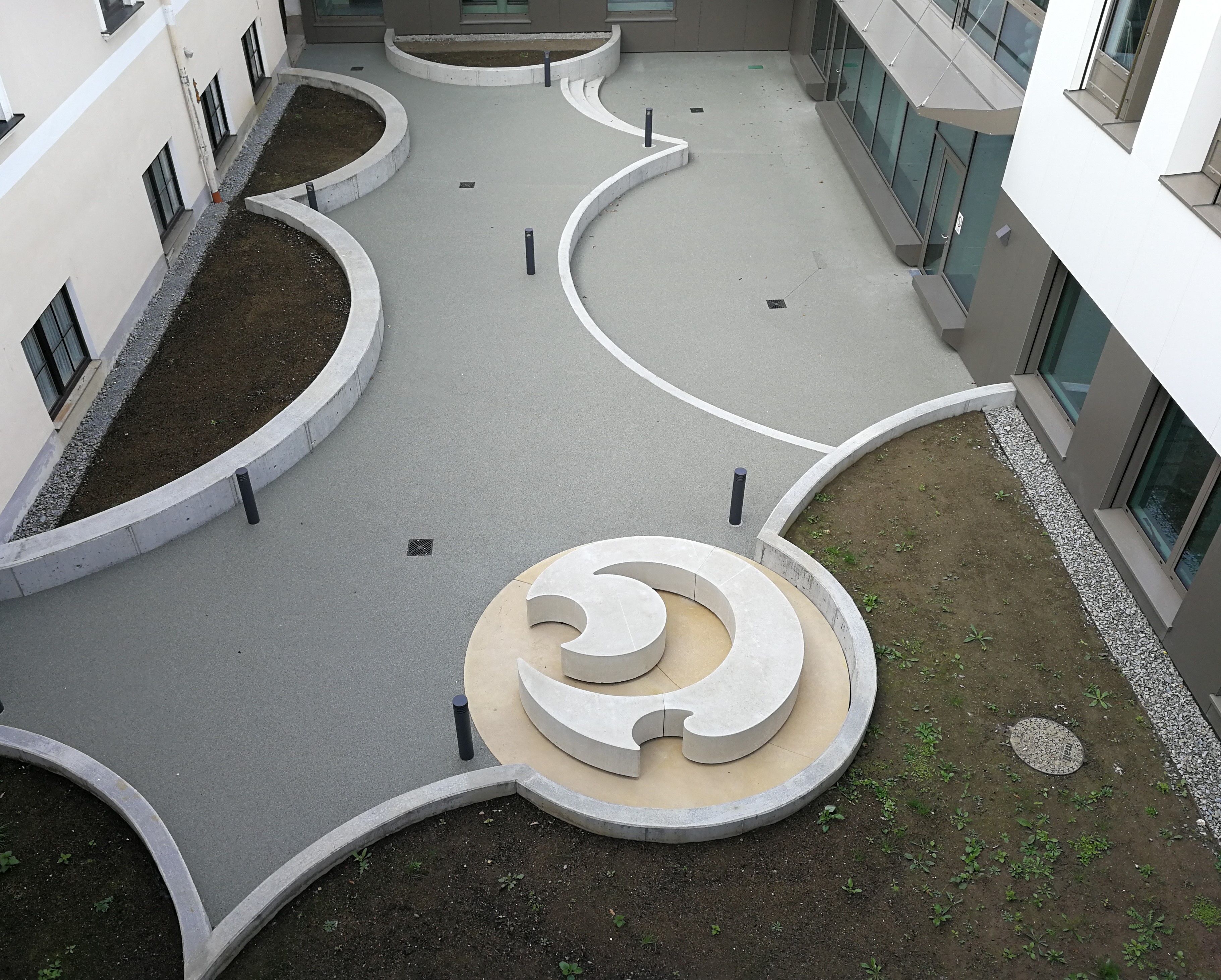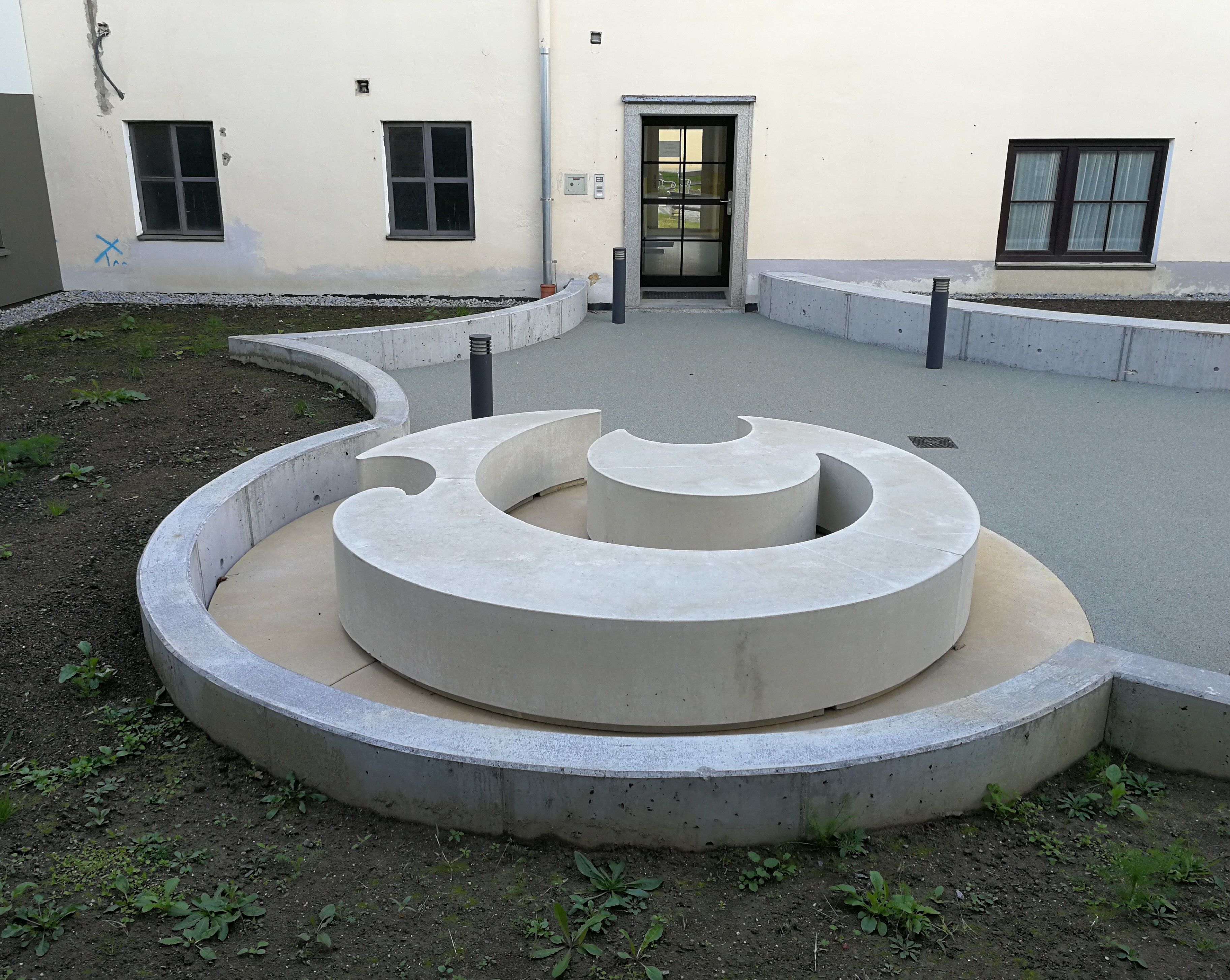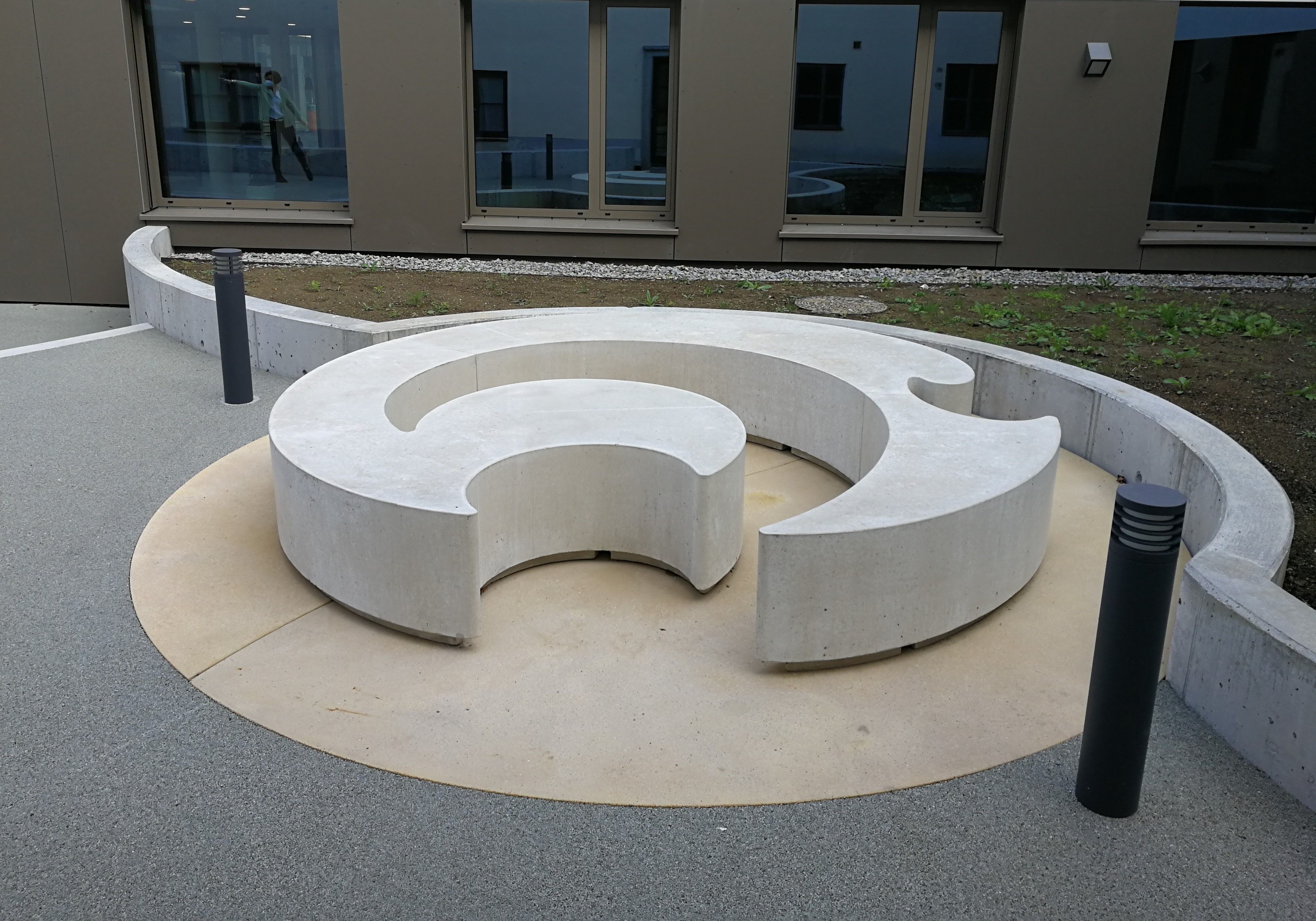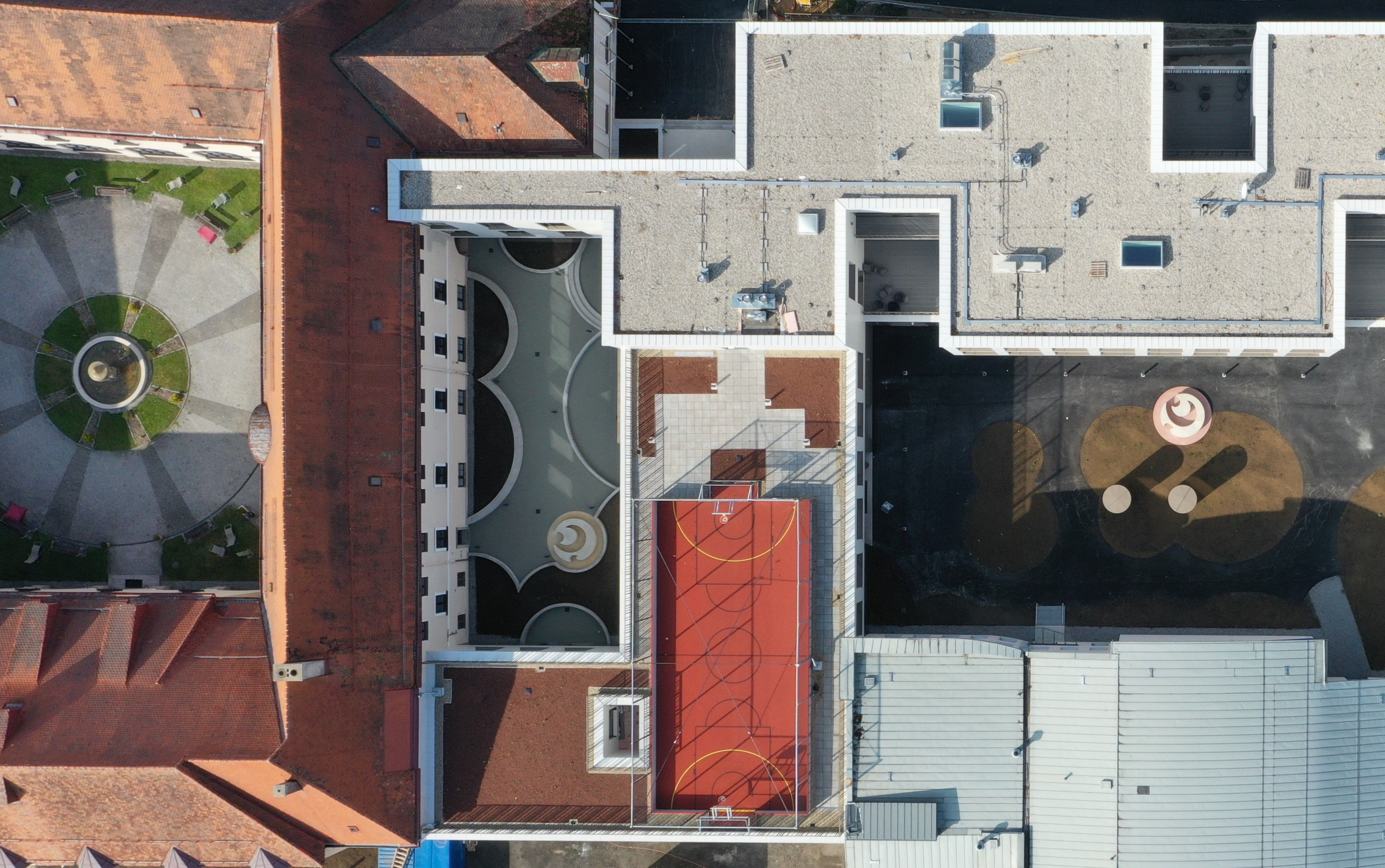Maria Hahnenkamp,
Willi Frötscher
:
Medaillon
Back
Information
The Landesberufsschule (LBS) (State Vocational School) in Schrems is located in Schrems Castle, a rectangular building with a large courtyard. An annex was added years ago, and now the castle has been expanded into a large architectural complex that also includes a dormitory. In the course of the construction of these additional buildings, two new courtyards evolved: one narrow inner courtyard connecting a cross-wing, which was constructed together with the dormitory, with the castle, and another larger courtyard that is open on one side (to the parking lot next to it, among other things) and that lies between the older and newer annexes. The artistic goal was to create artworks for these two newly constructed courtyards. Important requirements concerning the overall project had to be considered when planning the artistic design for both courtyards. With the idea in mind of creating a kind of echo of the dominant Baroque style of the castle, it was desired that the design for the inner courtyard should include circular segments on the ground, while the open front courtyard should incorporate grassy areas with trees—not only for the necessary shade, but also to counteract and play down the visual dominance of the tall exhaust air towers that are located in the middle of this area.
Maria Hahnenkamp has addressed the architectural site and its (older) history with her project Medaillon (Medallion). The castle was built in the early Renaissance and was converted to the Baroque style around 1700. Despite later changes, it is a typical Lower Austrian castle building from the 17th and 18th century, with a modernized inner courtyard that has ornamental designs and a round water fountain in the middle. Hahnenkamp refers to the formal habitus of the castle and translates aspects of its historical quality into our present time—also to connect to the architecture of the new building in the best possible manner—by placing one ornament bench in each of the newly created courtyards. She has taken the motif of the typical central courtyard fountain in the castle and lets its round shape, which she transforms somewhat, “migrate” to the two other courtyards, where she has placed her objects off-center. The sculpture in the smaller inner courtyard forms a kind of transitional object between the old and the new buildings.
The ornament benches are circular objects made of white concrete that Hahnenkamp has formed with her characteristic aesthetics. She “cut out” parts from the “disc” following an ornamental pattern, lending the objects a dynamic and evoking the impression that they are always slightly in motion. At the same time, this form also results in a specific arrangement of places where people can sit and how they sit in them.
With these ornament benches, which Hahnenkamp designed together with the architect Will Frötscher, she has created two elegant, sculpturally independent objects that carry on a tradition without being conservative. They also harmonize with the new architecture in terms of form, material, and color. That they can be used for sitting represents an additional quality. By making the physical and haptic character of these sculptures palpable, the artist brings them conceptually closer to the architecture, as is often the case with artistically designed fountains.
For decades, Hahnenkamp has been exploring the aesthetics of historical and ritual forms in our culture—whether these relate to everyday aspects like clothing, or to religious or clerical contexts. What is important to her is always a craft-based tradition, which she uses in a way that is critical of media and gender issues, without being at all romantic about it. The ornaments that she continues to use in many variations are, for the most part, from sample books from the 19th century. The ornament benches in Schrems are based on a 19th-century fresco painting and are traditional patterns derived from plants, for the most part, that have taken on an ornamental form on their own, just like in architecture. In Hahnenkamp’s versions, these patterns symbolize an intersection between nature and culture, between body and order system, depending on the type of work (photography, sculpture, wall work, and so forth). An ornamental form can be installed as a hugely magnified pattern across a courtyard,[1] or the artist might hand-stitch part of such an ornament and place it on the paper surface of a photograph of the detail of a figure in a red dress, for example. Or Hahnenkamp will let her ornament take over the surface of a wall with hand-drilled holes. In each case, the purpose of this overlaying is to symbolically visualize a different, abstract order that is inscribed—virtually as well as violently—onto bodies or objects.[2]
In addition to vocational training in a growing number of service professions, the LBS Schrems offers programs in shoemaking, orthopedic shoemaking, masonry, masonry engineering, textile chemistry, and textile cleaning. These are subjects that may require skills in a particular craft, knowledge of material properties and technology, as well as training in formal design. Hahnenkamp’s ornament benches, with their conceptually, materially, and aesthetically multifaceted character, represent an especially successful project for these school courtyards. Particularly when paired with the appropriate art education outreach, these works greatly enrich the architecture not just for those who teach and study at the school, but for everyone.
Silvia Eiblmayr
Notes
[1] At the HTBLVA (College of Textile Engineering and Computer Science) Spengergasse, 1050 Vienna.
[2] For more on the complex issue of ornaments in the modernist discourse, see Rainer Fuchs, “Ornament – Zum Inhalt des Inhaltlosen” in Katalog Maria Hahnenkamp, ed. Salzburger Kunstverein (Vienna: Schlebrügge Editor, 2009), 105 ff.
Images (4)




